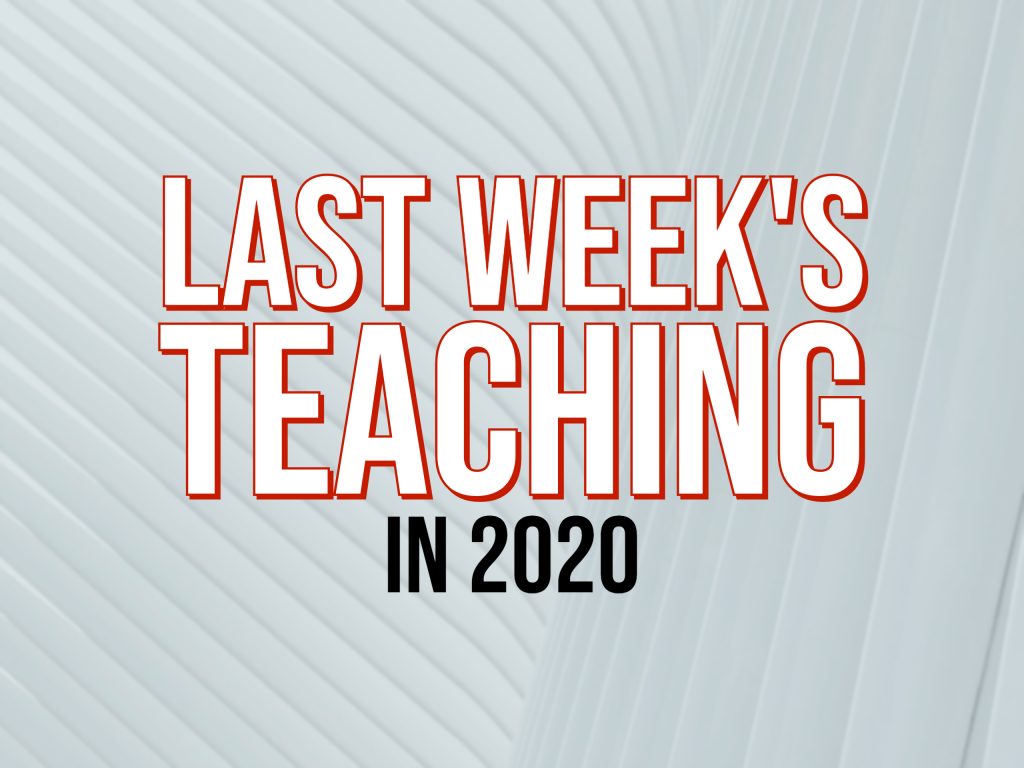 UA faculty describe their experiences teaching during the 2020-2021 academic year. Share your ideas and experiences here, and your entry could be featured in the next episode.
UA faculty describe their experiences teaching during the 2020-2021 academic year. Share your ideas and experiences here, and your entry could be featured in the next episode.
Blackboard App Extends Conversations with Students
I first learned of and used the Hypothesis app in Blackboard while participating in the Teaching Hub’s Learning Community Summer 2020 Reading Groups. I was unable to attend the live virtual discussions but was able to participate with Hypothesis. Hypothesis is a tool that allows you and your students to annotate and discuss readings in a virtual environment. It has been discussed previously on the Teaching Hub faculty blog so I won’t go into any more specifics here.
I do want to share my experience with Hypothesis in my graduate-level course. The course requires a lot of reading and much of our classroom time is devoted to discussion of the text. The class was remote this semester and our discussion time was limited. The readings in which we used Hypothesis produced much more fruitful discussions than the readings without. We seemed to be continuing a conversation since it had already begun through our annotations, and were in the ‘thick of it’ when we started to discuss on Zoom! As the instructor, I was able to identify students’ prior knowledge based on their comments/questions before our verbal discussion began.
Further, discussion leaders often steered the conversation around many of those comments/questions. Although I did not try it, I don’t think Hypothesis should not be used to replace verbal discussions in our online classes. Nevertheless, I do think it added tremendous value to our limited zoom discussions throughout the semester. Comments from the students on a mid-semester evaluation also echoed the same sentiment.
Planning Better Breakout Rooms on Zoom
Dr. Megan Savage, my colleague at Portland Community College, wrote about how she structures breakout rooms. Here is a summary of her blog post:
Face-to-face classrooms provide some instructors students’ energy, and videoconferencing may interrupt that sense of flow. Dr. Savage suggests several adaptations that might elicit more energy and flow during remote teaching and learning. One strategy is to have students plan topics to be discussed in advance (e.g. use a Blackboard survey), and then rename Zoom rooms accordingly. These discussions might work in two phases of research gathering and then analysis. The chat can be used in the former to post links, where the chat can serve as a live-feed during the latter (appoint a student moderator for extra credit!). A second strategy is to have assigned jobs to everyone in each breakout room. A third strategy is to model a mini-discussion with more advanced students. Ask the class to observe the discussion (perhaps with an evaluation rubric) and then debrief afterward.
Exercises to Help Remove Jargon from Writing
Understanding and applying new concepts is challenging. For fall 2020, I adapted some long-standing practices to remote teaching. I found a new one, too, thanks to my colleague Elizabeth Chamberlain at Arkansas State University. She asks her students to practice writing exercises using the XKCD simplewriter, which allows authors to write only using the 1000 most common English terms (e.g. the Saturn V Rocket). I adapted my old bag of tricks to remote teaching, too.
VoiceThread is a great app in Blackboard where students can read their assignments to the class (I don’t require them to be on camera). VoiceThread allows us not only to listen and give constructive feedback, but students say they spend more time refining their writing once they read it! I use this as a prelude to reading their work to each other in Zoom breakout rooms, where I “walk around the classroom” by dropping in and out of the various breakout rooms. My objective is to help students improve their writing in 2020, and it seems to be working!
Seeking Better Audio for Remote Teaching
What are your strategies for better remote teaching? I send my students these tips:
- Set your webcam for natural light on your face. Or, use a lamp to shine a nice even glow on your face. (Do not put a window behind you!).
- Use earbuds with an integrated microphone. And leave one earbud dangling. You will sound better. You will hear yourself to moderate your voice. People won’t hear your pets, A/C, etc.
- Aim the webcam ABOVE your eye line (laptop webcams are at the top of the screen). Ideally, face the webcam looking slightly up. (Not sure I can do this one!)
- Position your webcam so that your face appears in the upper third of the screen (“rule of thirds”). Improve your webcam image by finding/using “HD” on the video settings.
- TEST your audio and video 10 minutes before EACH meeting
But:
- Ben Kuhn challenges some of my suggestions in “How to Make Video Calls as Good as Face-to-Face.” For example: Don’t mute. Use your smartphone. Really…?
- my students have told me about Discord, which Protocol says is the future of the internet. Discord is used by gamers (i.e. college-aged people) all around the world. Unlike Zoom (Google Chat, Skype, or any other app…), Discord allows 1000s of people to have a real-time conversation with zero latency. Should I use it?
Questions about this series? Contact Nathan Loewen at nrloewen@ua.edu.